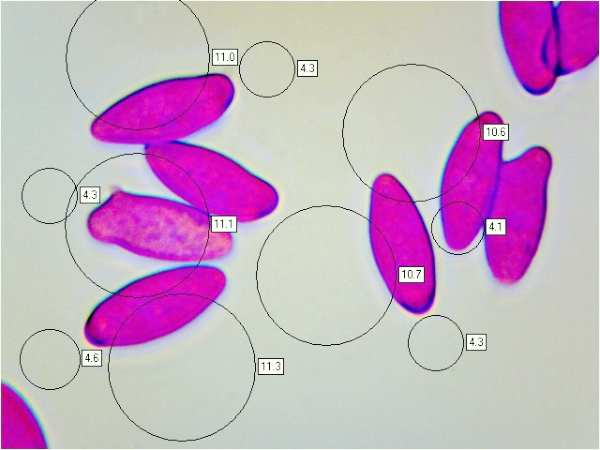Lepiota grangei (Eyre) Kühner - Green Dapperling
Phylum: Basidiomycota - Class: Agaricomycetes - Order: Agaricales - Family: Agaricaceae
Distribution - Taxonomic History - Etymology - Identification - Toxicity - Reference Sources
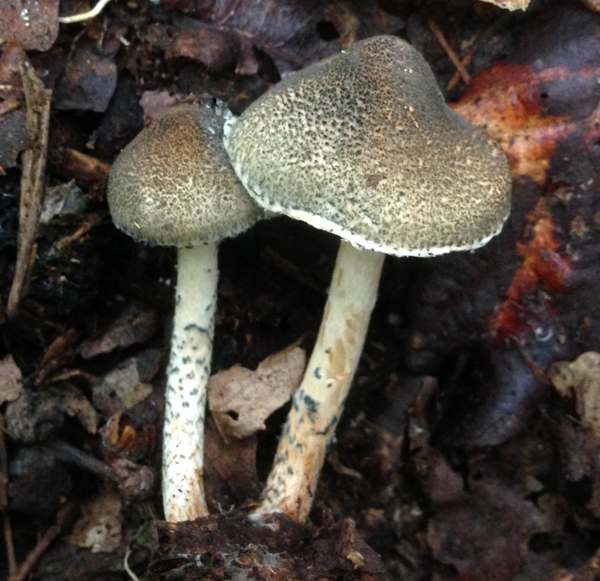
Few dapperlings are more distinctive than the Green Dapperling Lepiota grangei, whose scales are sometimes a startlingy bright emerald green. Like other small dapperlings Lepiota grangei is reported to be seriously poisonous.
Distribution
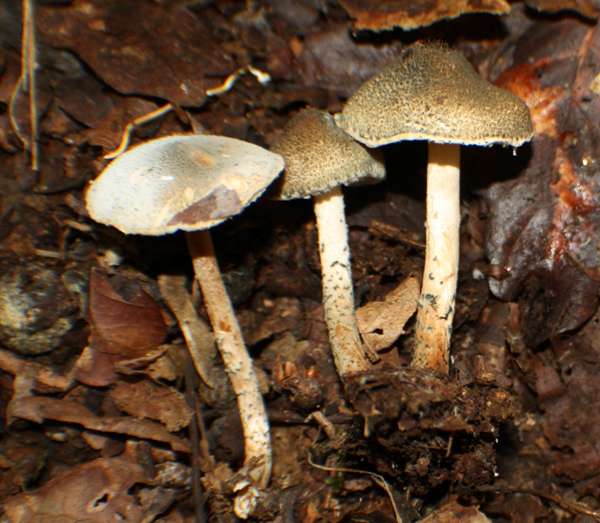
Rare in Britain and Ireland (not recorded from Scotland), mainly appearing in broadleaf woodland but sometime in nettle beds, Lepiota grangei occurs also in parts of mainland Europe including Sweden, Norway, Belgium and Poland.
Taxonomic history
This mushroom was described in 1902 by English mycologist Rev. William Leigh Williamson Eyre (1841 - 1914), who published notes and lists of fungi found in various parts of Hampshire, England, including Grange Park. Eyre gave this dapperling the name Schulzeria grangei, but in 1934 Robert Kühner transferred this species to the genus Lepiota, establishing its currently-accepted common name of Lepiota grangei.
Synonyms of Lepiota grangei include Schulzeria grangei Eyre and Hiatula grangei (Eyre) W.G. Sm.
Etymology
Lepiota, the genus name, comes from Greek words Lepis-, meaning scale, and -ot, meaning ear. Scaly ear fungus is an interpretation, therefore. Scales on a convex (vaguely ear-shaped, perhaps) cap are characteristic of fungi in this genus, as also are free gills and a stem ring.
The specific epithet grangei refers to Grange Park, near Northington in Hampshire, England, where Rev. Eyre made records of the fungi.
Identification guide
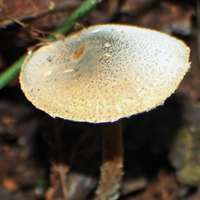 |
CapInitially hemispherical, becoming convex and sometimes almost flat with a slight umbo; ochraceous surface with velvety dark-green cuticle scales near the centre, surrounded by concentric rings of brownish-green scales, paler and more widely spaced towards the margin; flesh whitish. Cap diameter at maturity ranges from 2 to 4cm. |
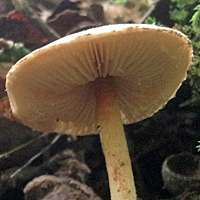 |
GillsThe free, crowded gills are white or cream, darkening with age. Pleurocystidia are clavate. StemCreamy white or ochraceous, 3 to 5cm long and 3 to 6mm diameter; bulbous base; flesh whitish. The lower two thirds of the stem, below an indistinct white ring, is decorated with green scales, becoming smaller towards the base. |
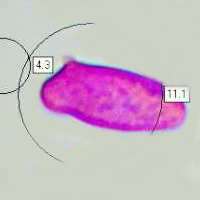 |
SporesCylindrical to oblong ovoid, with a truncate base; smooth, 10-12 x 3.5-4μm; dextrinoid. Spore printWhite. |
Odour/taste |
Odour unpleasant sickly sweet, similar to Lepiota cristata; taste not significant (but note that tasting dapperlings is inadvisable). |
Habitat & Ecological role |
Saprobic, solitary or in small groups in broadleaf and mixed woodlands, often with Beech. |
Season |
September to November in Britain and Ireland. |
Similar species |
Lepiota ignivolvata has a bright orange or red-brown ring low down on the stem. Lepiota cristata is typically larger with brownish scales. |
Toxicity
In my opinion there are no dapperlings worth collecting to eat, particularly because confident identification in the field is very difficult and several of them are seriously toxic toadstools. For example, Lepiota cristata the Stinking Dapperling is poisonous and could be mistaken for a small edible Parasol Mushroom Macrolepiota procera. If what you believe to be Parasols are smaller than 10cm in cap diameter then check very carefully, because it is possible that they are actually poisonous Lepiota species.
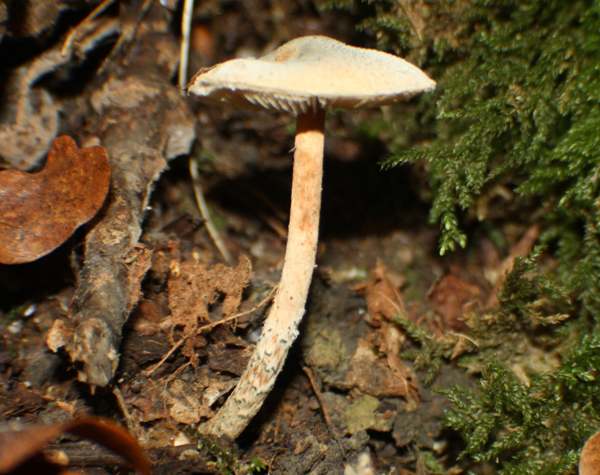
Reference Sources
Fascinated by Fungi, 2nd Edition, Pat O'Reilly 2016, reprinted by Coch-y-bonddu Books in 2022.
Eyre, W. L. W. (1907). A list of the fungi of Grange Park and neighbourhood, Hampshire. Winchester: Warren & Son.
Funga Nordica: 2nd edition 2012. Edited by Knudsen, H. & Vesterholt, J. ISBN 9788798396130
British Mycological Society. English Names for Fungi
Dictionary of the Fungi; Paul M. Kirk, Paul F. Cannon, David W. Minter and J. A. Stalpers; CABI, 2008
Taxonomic history and synonym information on these pages is drawn from many sources but in particular from the British Mycological Society's GB Checklist of Fungi.
Acknowledgements
This page includes pictures kindly contributed by Simon Harding.
Fascinated by Fungi. Back by popular demand, Pat O'Reilly's best-selling 450-page hardback book is available now. The latest second edition was republished with a sparkling new cover design in September 2022 by Coch-y-Bonddu Books. Full details and copies are available from the publisher's online bookshop...
